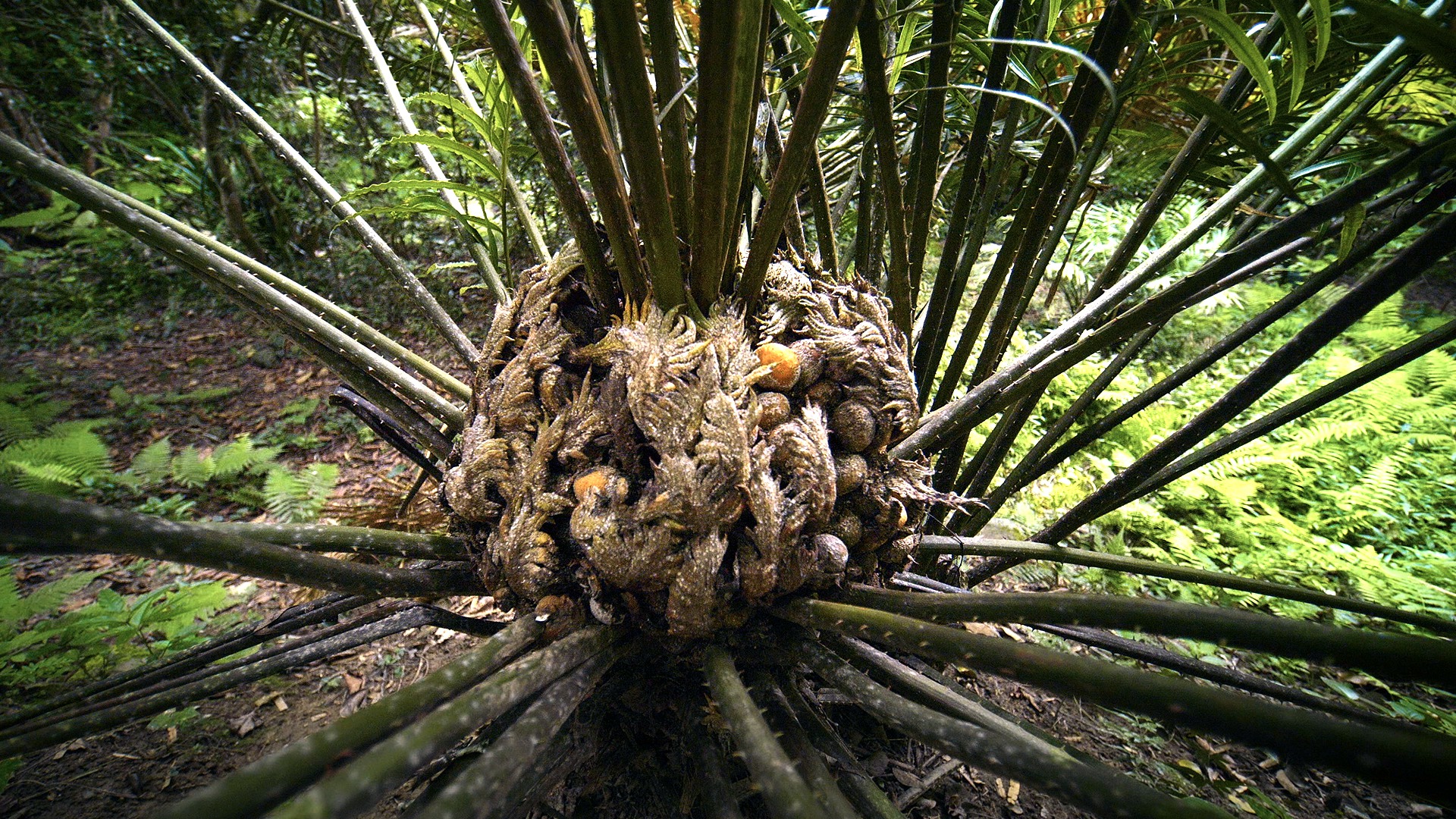05:26

In Shenzhen City, south China's Guangdong Province, a thriving young metropolis, some ancient plant species still live. They first emerged in the Permian Period 250 million years ago, when dinosaurs ruled this planet. In the Jurassic and Cretaceous Periods, these plants were in their prime. But during the catastrophic mass extinction, they saw a gradual decline. The few members that survived are hailed as "living fossils." In Shenzhen, the most distinctive of them is Cycas fairylakea.
About 'Journeys in Nature': Greater Bay Area Series
Comprising Hong Kong, Macao and nine cities in south China's Guangdong Province, the Guangdong-Hong Kong-Macao Greater Bay Area is one of the largest and most populated urban areas in the world and has bustling wildlife. A crab spider has targeted a wasp, a fairy pitta mother is busy with child-rearing, and other forest residents, such as Chinese flying frogs, crab-eating mongooses and silver pheasants, are wandering along the rivers and streams while the marine creatures have their own roles to play in the undersea community. Stay tuned for more!
For more:
Greater Bay Area Series | Episode 1: The crab spider's menu
Greater Bay Area Series | Episode 2: Fairy pitta
Greater Bay Area Series | Episode 3: Chinese flying frog
Greater Bay Area Series | Episode 4: Flying frog romance
Greater Bay Area Series | Episode 5: Crab-eating mongoose
Greater Bay Area Series | Episode 6: Silver pheasant
Greater Bay Area Series | Episode 7: Paphiopedilum purpuratum
(Cover image a video screenshot; video shot by CGTN Nature film crew)
(If you want to contribute and have specific expertise, please contact us at nature@cgtn.com.)